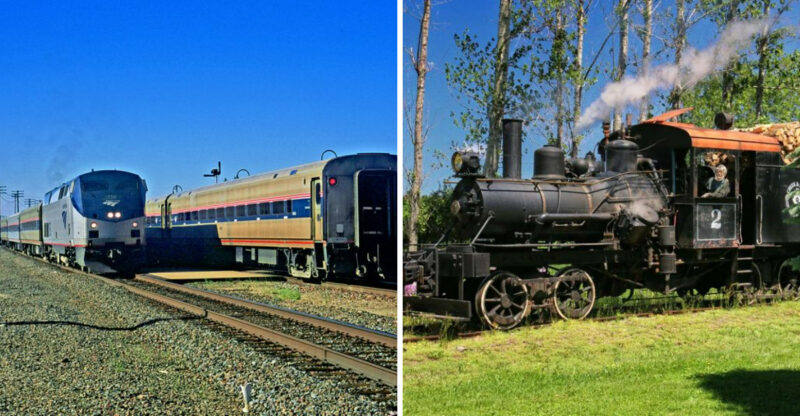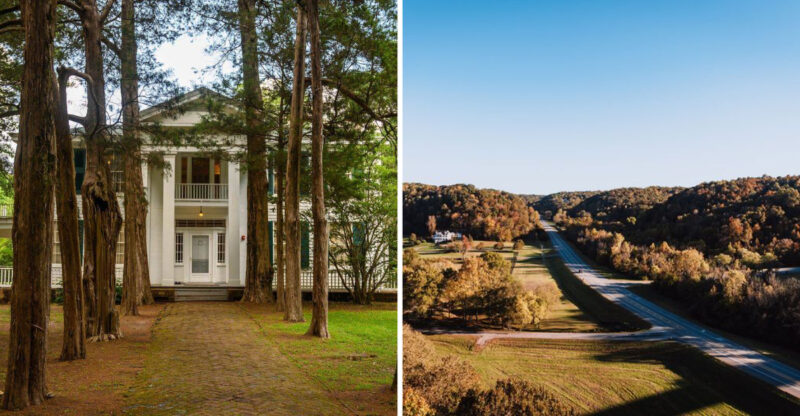16 Unreal Natural Wonders You Have To See In Washington State
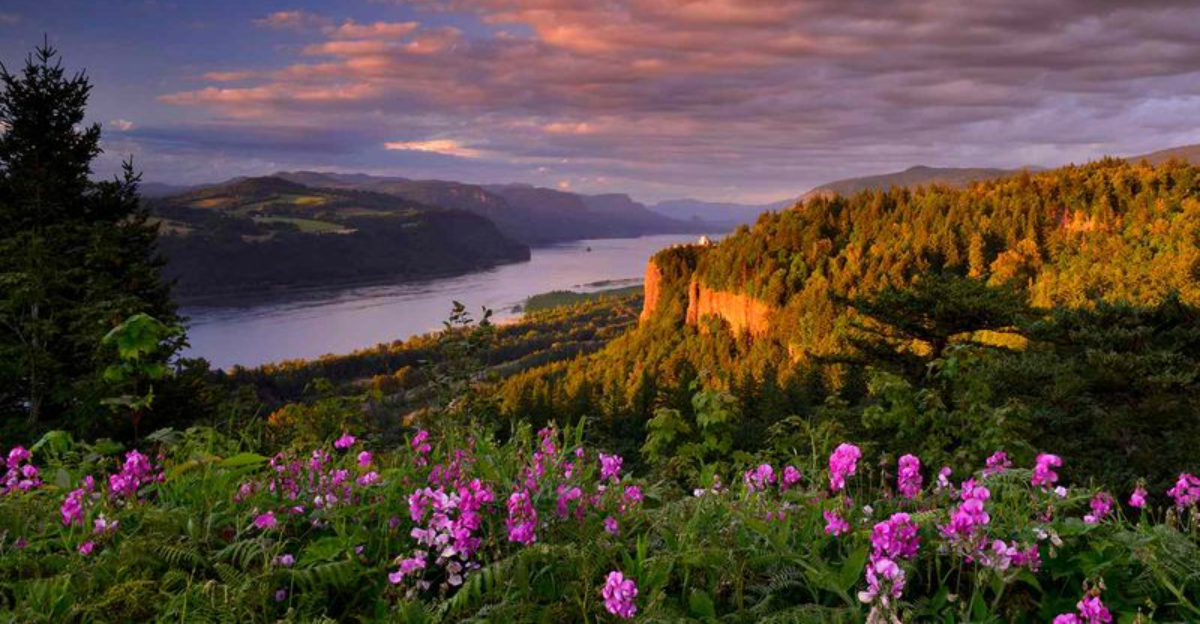
Washington State offers some of the most spectacular natural scenery in the country, from towering mountains to ancient forests. The landscapes here range from volcanic peaks to cascading waterfalls, each with its own unique story to tell.
Whether you’re an outdoor enthusiast or simply looking for breathtaking views, these natural wonders showcase the incredible diversity of the Pacific Northwest.
1. Mount Rainier
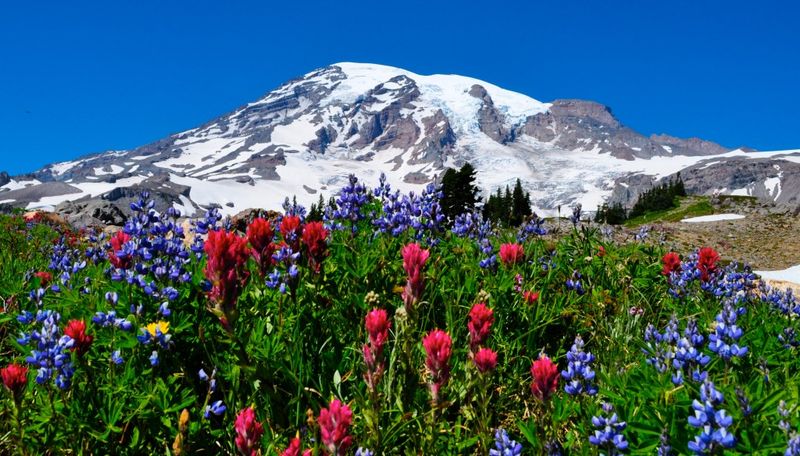
Standing tall at 14,411 feet, this active volcano dominates the skyline and captures attention from miles away. Glaciers cling to its slopes while wildflower meadows bloom at lower elevations during summer months.
The mountain creates its own weather patterns and offers countless trails for exploration. Visitors find themselves surrounded by old-growth forests, crystal-clear streams, and wildlife at every turn.
2. Hoh Rain Forest
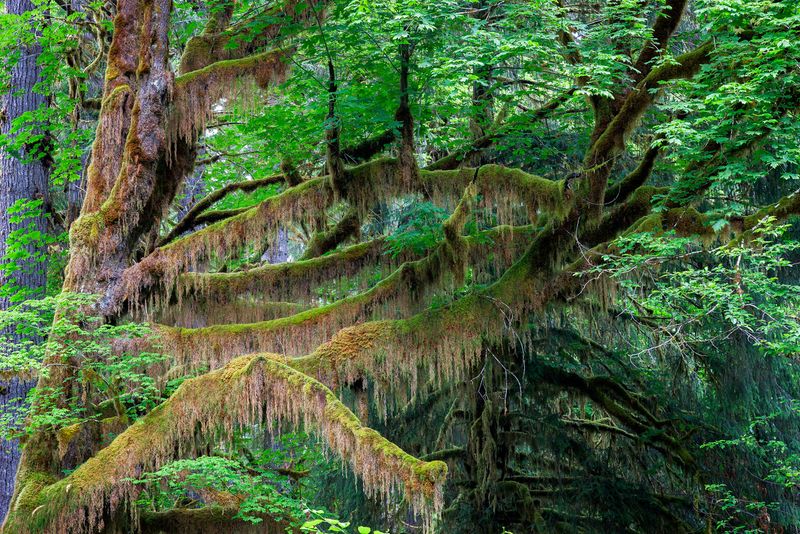
Receiving up to 14 feet of rain each year, this temperate rainforest feels like stepping into another world entirely. Emerald moss drapes from tree branches like nature’s curtains, while ferns carpet the forest floor in every shade of green.
The air feels thick with moisture and life here. Massive Sitka spruce and western hemlock trees tower overhead, some centuries old and still growing strong.
3. Snoqualmie Falls
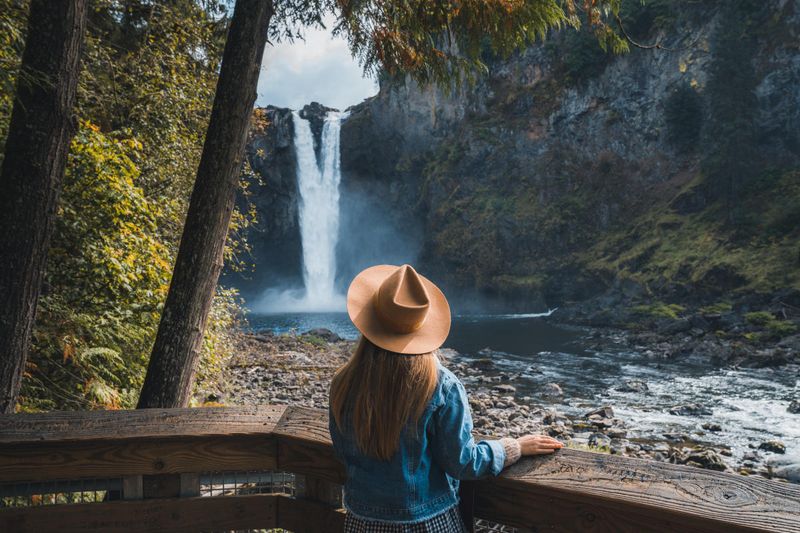
Water plunges 268 feet over a rocky ledge, creating a thunderous roar that echoes through the surrounding canyon. Spring runoff transforms the falls into an even more powerful display of nature’s force.
The Snoqualmie Tribe considers this sacred ground, holding deep cultural significance for generations. Viewing platforms offer perfect vantage points for photography, and trails lead down to the base for closer views.
4. Palouse Falls

Carved by ancient floods, this 200-foot waterfall drops dramatically into a bowl-shaped canyon in southeastern Washington. The surrounding landscape feels almost otherworldly, with basalt cliffs rising from the canyon floor.
Photographers flock here during golden hour when the light paints the rocks in warm hues. The falls remain powerful year-round, though flow varies with the seasons and rainfall patterns.
5. Mount St. Helens

The 1980 eruption reshaped this volcano forever, leaving behind a horseshoe-shaped crater that still steams occasionally. Nature has slowly reclaimed the blast zone, with wildflowers and small trees returning to areas once buried in ash.
Hiking trails wind through the recovery zone, offering glimpses of how ecosystems rebuild after catastrophic events. The Johnston Ridge Observatory provides educational exhibits and stunning views of the crater itself.
6. Grand Coulee Dam
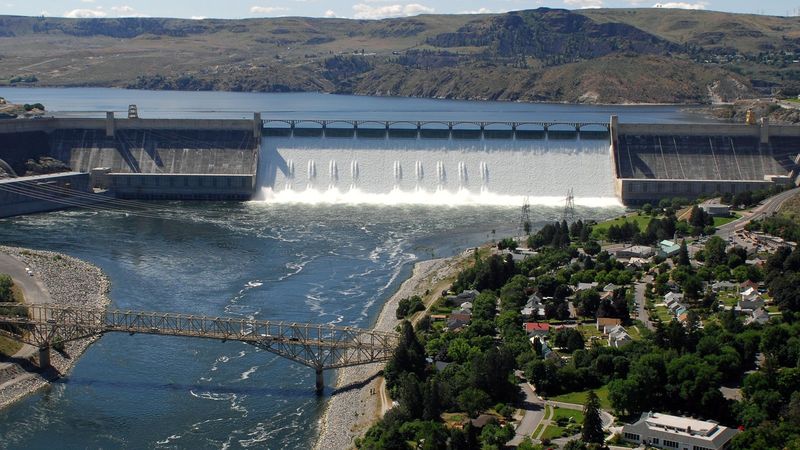
Spanning the Columbia River, this massive concrete structure ranks among the largest in the entire country. Built during the Great Depression, it transformed the region by providing irrigation water and hydroelectric power to thousands.
Lake Roosevelt stretches behind the dam for miles, creating recreational opportunities throughout the year. Evening laser light shows during summer months illuminate the dam face with colorful displays and historical narratives.
7. Ginkgo Petrified Forest

Thousands of petrified logs lie scattered across this landscape, preserved in ancient lava flows from millions of years ago. The fossilized wood displays stunning colors and patterns, each piece telling a story of prehistoric forests.
This site ranks among the world’s most diverse petrified forests, with specimens from over 40 tree species. Trails wind through the preserve, and interpretive centers help visitors understand the geological processes that created this remarkable place.
8. Lake Chelan
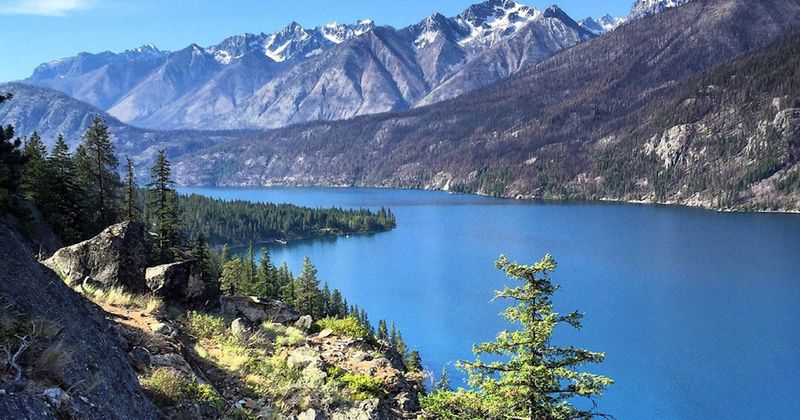
Stretching 55 miles between mountain ranges, this glacial lake offers some of the clearest water in the Pacific Northwest. Vineyards dot the surrounding hillsides, producing award-winning wines in the sunny microclimate.
Boat tours transport visitors to the remote community of Stehekin at the lake’s northern end. Swimming, fishing, and water sports draw crowds during summer, while the scenery captivates visitors year-round with changing seasonal colors.
9. Columbia River Gorge

Carved by ancient floods, this dramatic canyon showcases dozens of waterfalls tumbling from basalt cliffs. Hiking trails range from easy walks to challenging climbs, each offering different perspectives on the gorge’s beauty.
Windsurfers and kiteboarders take advantage of consistent winds funneling through the canyon. Vineyards and orchards thrive in the unique climate, while historic highways provide scenic driving routes with countless pullouts for photos.
10. Deception Pass Bridge

Connecting two islands across a narrow, turbulent strait, this steel bridge arches gracefully above swirling tidal currents. The surrounding cliffs drop dramatically to the water below, where currents create whirlpools and standing waves.
Trails lead down to beaches and rocky outcrops perfect for tide pool exploration. The area’s maritime history includes tales of early explorers who initially mistook the pass for a bay, hence its deceptive name.
11. North Cascades National Park

Jagged peaks pierce the sky in this remote wilderness area, earning it the nickname “American Alps” from mountaineers and hikers. More than 300 glaciers cling to the mountain slopes, feeding countless waterfalls and turquoise alpine lakes.
Wildlife thrives in the backcountry, from black bears to mountain goats navigating steep cliffs. The park receives fewer visitors than other national parks, offering solitude and pristine wilderness for those willing to venture off the beaten path.
12. Olympic Coast

Sea stacks rise from the surf like ancient sentinels along this wild stretch of Pacific coastline. Tide pools teem with colorful sea stars, anemones, and crabs during low tide, while driftwood logs pile high on sandy beaches.
Bald eagles soar overhead, and gray whales migrate past the shore during spring and fall. The beaches here remain relatively undeveloped, offering a glimpse of what the coast looked like before modern development.
13. Diablo Lake
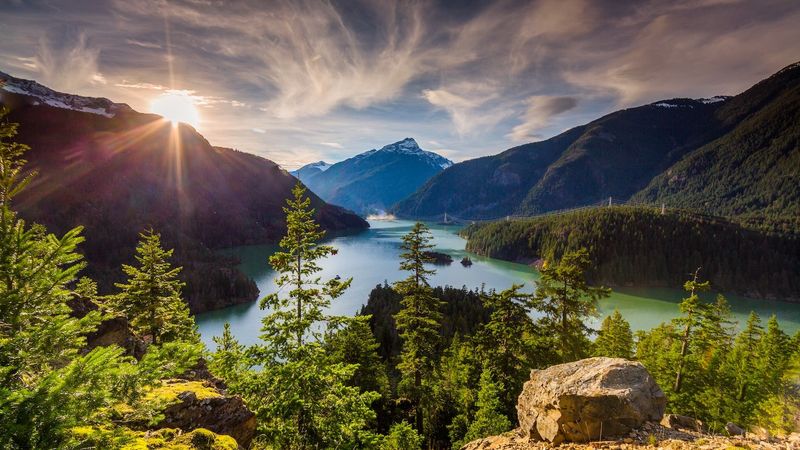
Glacial flour suspended in the water creates an otherworldly turquoise color that seems almost too vibrant to be real. The lake sits nestled between towering peaks in the North Cascades, accessible by scenic highway and hiking trails.
Boat tours operated by Seattle City Light offer unique perspectives on the surrounding wilderness and dam infrastructure. Overlooks along the highway provide stunning photo opportunities, especially during summer when the color appears most intense.
14. Cape Flattery

Marking the northwestern-most point of the continental United States, this dramatic headland juts into the Pacific Ocean. Boardwalk trails wind through coastal forest to viewing platforms perched above sheer cliffs.
Sea caves carved by relentless waves dot the coastline below, while offshore rocks provide nesting sites for seabirds. On clear days, the view stretches to Vancouver Island across the Strait of Juan de Fuca, with waves crashing against rocks far below.
15. Rattlesnake Ledge

A popular hiking destination near Seattle rewards climbers with sweeping views of Rattlesnake Lake and the surrounding Cascade foothills. The relatively short but steep trail makes it accessible for families and casual hikers seeking mountain vistas.
Rock ledges at the summit provide natural seating areas for taking in the scenery and resting before the descent. During autumn, the valley below transforms into a patchwork of fall colors against evergreen forest.
16. Dry Falls

Once the world’s largest waterfall during the Ice Age floods, this massive cliff now stands silent and dry. The horseshoe-shaped canyon stretches 3.5 miles wide and drops 400 feet, dwarfing Niagara Falls in scale.
Interpretive centers help visitors imagine the catastrophic floods that carved this landscape thousands of years ago. The stark beauty of the basalt cliffs and surrounding coulees creates a landscape unlike anywhere else in Washington State.

